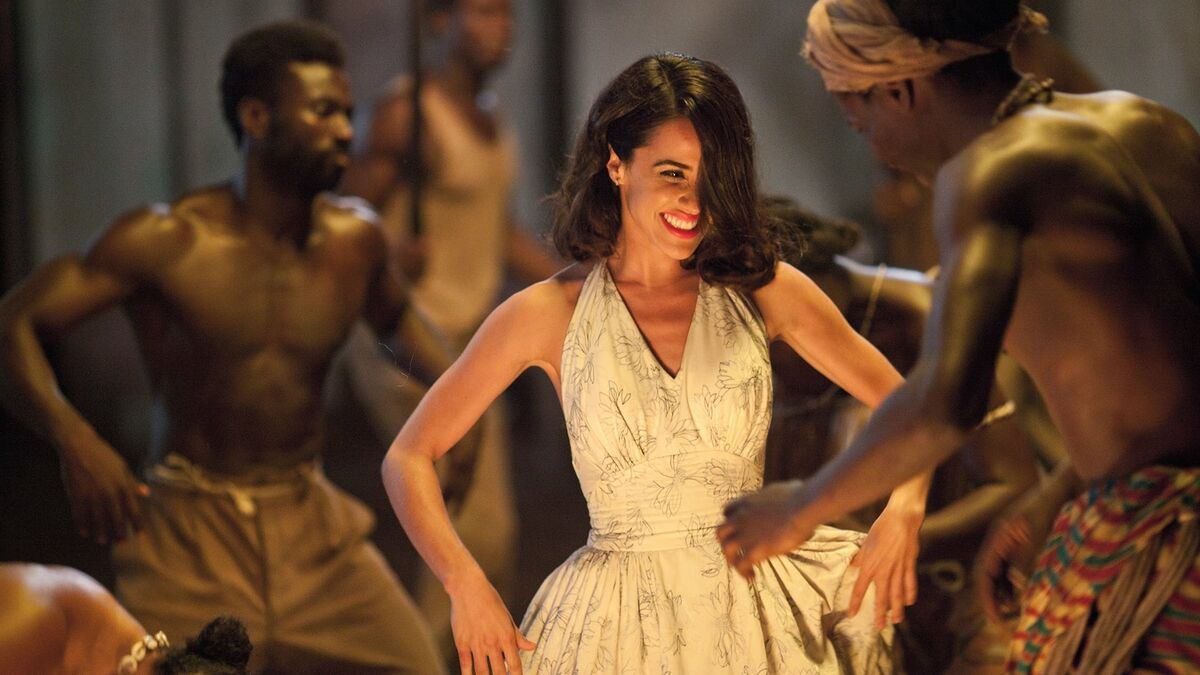Palm Trees in the Snow (2015)

Palm Trees in the Snow (2015) is a captivating Spanish romantic drama directed by Fernando González Molina, based on the novel Palmeras en la nieve (2012) by Luz Gabás. The film is set in both the 1950s and the present day, weaving together two distinct timelines to uncover a tale of love, family secrets, and the complex history of colonialism. Through the eyes of the protagonist, the movie explores themes of cultural identity, love across boundaries, and the emotional ties that connect generations.
The story begins with the character of Clarence (played by Adriana Ugarte), a young woman from the Spanish mainland who travels to the island of Bioko, formerly part of Spanish Guinea, in the present day. She is searching for answers about her family’s past, specifically her father’s connections to the island. Upon her arrival, she discovers a set of letters and memories that link her family to the island’s colonial history, specifically to her father’s past during the 1950s, when he lived there. These letters lead Clarence to uncover the love story between her father and a local woman, as well as the complexities of colonial relationships.
The film’s main storyline centers around the forbidden love affair between Clarence’s father, Killian (Mario Casas), a Spanish expatriate, and a local woman named Bisila (Berta Vázquez). In the 1950s, Killian works on a cocoa plantation on the island, where he becomes involved in a passionate and secretive relationship with Bisila. Their love faces immense cultural and societal challenges due to the racial and social divides created by colonialism. The movie portrays the tension between their love and the oppressive forces of colonial rule, showing the struggles they endure to be together.
Palm Trees in the Snow masterfully explores the theme of identity, particularly through Clarence’s journey. As she delves into her family’s past, Clarence begins to understand the emotional and cultural complexities that shaped her father’s life. This journey also becomes one of self-discovery, as she grapples with her own identity in relation to the colonial history of Spain and its former territories. The film paints a poignant picture of the impact that history has on personal and collective identities, highlighting the long-lasting effects of colonialism on both the colonizers and the colonized.

The performances in the film are powerful and moving. Mario Casas delivers an emotionally resonant portrayal of Killian, a man torn between love for Bisila and his loyalty to the colonial system. Berta Vázquez, as Bisila, brings depth to her character, showing the strength, resilience, and emotional complexity of a woman in love yet bound by the rigid boundaries of society. Adriana Ugarte’s performance as Clarence adds another layer of emotional depth to the film, as she uncovers painful truths about her family’s past and its impact on her own life.

The cinematography in Palm Trees in the Snow is breathtaking, capturing the natural beauty of the island of Bioko, with its lush landscapes and stunning vistas. The visual contrast between the historical and modern-day settings enhances the storytelling, as the film moves between Clarence’s present-day discoveries and the vibrant, yet painful, past of her family. The lush palm trees, the cocoa plantations, and the tropical climate all serve as symbols of both love and tragedy, representing the beauty and complexity of the story unfolding.

In conclusion, Palm Trees in the Snow is a deeply emotional and visually stunning film that explores the intertwined themes of love, history, and identity. The captivating performances, powerful storytelling, and poignant exploration of colonial legacies make it a memorable cinematic experience. Through its dual timelines and rich narrative, the film invites viewers to reflect on the personal and collective histories that shape our understanding of love, family, and cultural belonging. Palm Trees in the Snow is a timeless tale of love that transcends boundaries, reminding us of the enduring power of history and the human heart.











